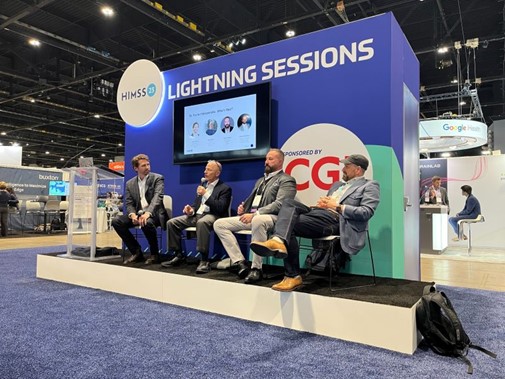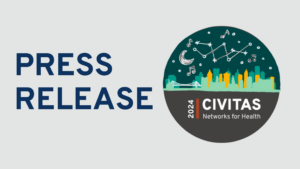Civitas’ national network is growing! We recently caught up with leaders from Smile Digital Health to discuss their efforts to improve public health through evolving health care information technology through FHIR and open standard health data fabric.
Meet Shane McName, MD, Senior Vice President of Strategic Growth and Peter Yiu, MEng, Director of Strategy and Transformation
Written by Malik Chambers
Published on July 26, 2023
It is a pleasure to be meeting with you today to talk about Smile Digital Health! Could you give us an introduction to your organization?
Shane: Smile Digital Health is a Toronto-based Digital Health care company that enables providers, payers, researchers, and life sciences organizations to ingest, transform, store, enrich, analyze, aggregate, and share health information. The company came from Canada and is now global. We have 120 customers around the world, including several major payers and legacy HIEs (Health Information Exchanges) in the United States. For example, we have customers in Uganda building an HIV data network off our technology. People are also taking our health data fabric and building first generation health information exchanges in a modern way.
Our two founders built the first-generation HIE in Ontario as solution architects that worked for Ontario Health. It was built using all the same machines that we use in the United States. It is all the same Electronic Health Records (EHRs) and all the same protocols. That began Smile’s journey with FHIR. They envisioned a care traffic control system that was modernly architected, and event driven that could calculate quality in near real-time. It is the core of our application and everything else that we do. We see it as a major benefit to the legacy HIEs in terms of the data structures that it has.
At Smile, we have Smilers chairing various committees at HL7 groups. James Agnew (Co-Founder and CTO) is the co-chair of the HL7 Publishing Committee, Duncan Weatherson (Co-Founder and CEO) is the Co-chair of FHIR Accelerator FAST (FHIR at Scale Taskforce), Bryn Rhodes (Director of Standards Strategy) is the co-chair of the Clinical Decision Support (CDS) WG, and a key member of the US Realm Steering Committee and the Terminology Services Management Group, and Rob Reynolds (Managing Director, Clinical Reasoning) is the Technical Lead of the Da Vinci Risk Adjustment Implementation Guide.
What is your value proposition?
Shane: Our value proposition to our customers is to build, deliver, and evolve the public health IT fabric. These utilities use FHIR (Fast Health Care Interoperability Resources) data automation to reduce friction in provider, payer, and patient workflows. We aim to accelerate the integration of new products into the ecosystem from six months to six weeks. We want our stakeholders to use FHIR-CQL automation to maximize star ratings and decrease the burden placed on data quality staff. Our goal is to help align organizations with TEFCA (Trusted Exchange Framework and Common Agreement), CMS, and other national regulatory frameworks and institutions.
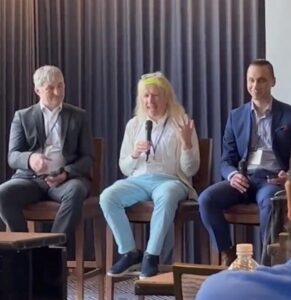
You mentioned the founder was responsible for implementing FHIR in Canada. Why is FHIR a critical component of the health data fabric?
Shane: Let us look at how information technology machines in health care communicate with each other., Like us, they use languages that we use when we communicate with each other. The legacy languages in the US marketplace are called a CCDA, which has just enough intelligence that a machine can look at it and understand what is on it.
But then you have other protocols that are machine languages like HL7 version two. HL7 is one of the key governing bodies for comprehensive health care data standards around the globe. All the information technology machines and the standards in the US and other countries are bound to these standards.
We partner with HL7, and they use much of our technology and validation. I will give a brief historical deep dive. The historic doppelganger for the advancement of health care data standards today is most like what happened in the 1890s in North America with power and electricity implementation and innovation.
If you owned a town, a village, or any form of property back then, you could choose from Westinghouse’s power, Edison’s power, Tesla’s power, or you can choose your local neighborhood electricity broker. Each one of those differing power systems had their machines that were patented so that other companies could duplicate their processes. Each power company owned all the power lines, and equipment, and would shape their plugs for exclusive compatibility with their products. You could not buy a blender, take it across town, and plug it into your mom’s house, because it would not fit into the socket unless both of you shared the same power company source. If you attempted to plug in your device to the wrong socket, it would explode. Over time, standards for plugs and equipment became more streamlined. This was a success, and standard-based electricity reshaped the world’s face in that regard.
The same thing is happening now in health care, with data standards. I spent 15 years as a doctor in Veteran Affairs, and we went from paper charts to electronic charts that did not communicate with one another. During the first generation of digitization of health care, the data marketplace had many big proprietary data machines that did not share data well with each other, or for their patients. These entities locked the marketplace down, and then the US federal government brought forth a bunch of regulations saying, “Thou shalt build systems like TEFCA.” If you look at all the legacy machines in terms of how they are making their data in their way, what they need to do is move to a standard that everybody can use. We need mechanisms that allow health data to follow the patient wherever they may go rather than be owned by any system. And that is what FHIR is doing.
Peter: James Agnew, our founder and Chief Technology Officer CTO is one of the individuals that found it and started HAPI FHIR. HAPI FHIR is the Java implementation of FHIR. For all the Java programming out there, who want to build FHIR applications in the Java language, they would choose HAPI FHIR. Our technology is built on top of this implementation at an enterprise grade for the world.
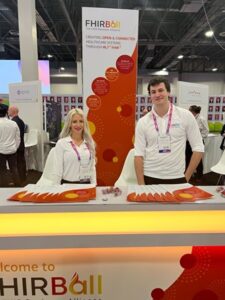
How important is it for these standards to be implemented across all health systems? How do you differentiate Smile’s services from others in the market?
Shane: If we look at health care’s ills right now, 60% of provider time is spent looking at a computer screen and searching for EHR. This is where Smile comes in. Open standards allow the ecosystem of health care to start fixing massive inefficiency and data quality problems.
We are a product maker, and we implement our health data fabric model that is modernly architected. Customers chose us because it is a health data fabric that works at the population health level and has FHIR at its core. Some companies claim that they have FHIR at their core, but nobody has a set of clinical reasoning utilities that are effectively integrated with the health data fabric.
In health care today, it takes 6 weeks to 6 months to calculate quality because there are a whole bunch of steps that they must do to collect data cleanly. We have a clinical reasoning utility that is built on open standards, which allows millions of people to do near real-time quality monitoring for risk systems. Our data utility then allows you to bridge the gaps in care or clinical decision support into the world.
A lot of our competitors want to build everything and own everything. We are an open standards company. We sit in the middle and enable open economies to build around these standards.
What do your customers look like? Are your customers already using a health data fabric, but are looking for something a little bit more efficient?
Our core customers are all undergoing digital transformation. There are legacy health information exchanges that were built 10 to 15 years ago for a market need at that time and cannot handle modern exchange needs. We are seeing Health Information Exchanges moving forward to becoming Health Data Utilities. Our customers want to modernize their data infrastructure while they are doing a digital modernization. We see major players who are being regulated by the federal government to start to act like health data exchanges and are being mandated to bring in FHIR in diverse ways. We work with major payers to help rework their ecosystems to meet CMS regulations. This includes organizations that want to update their EHR.
We also then have a Smile Inside approach where vendors who serve those markets take our product and build their product around it. We sell directly to those people.
Peter, did I miss anything else you want to share?
Peter: Life sciences! We work with life sciences for research and those purposes as well. We serve the whole spectrum from HIEs to payers, providers, and research organizations.
What is the most exciting thing about being in this network of different HIEs, health data utilities, regional health improvement collaboratives, other U.S. national networks, and solutions partners?
Shane: Priority number one for us is supporting our customers and partners as they set the next generation of health data utilities on FHIR. We are coming in as a trusted product team and are working with some of your members already. The thing that we are most excited about is seeing our customers succeed and how this contributes to Civitas’ national network and the exciting opportunities you are creating.
Our second goal is building real-time, risk aware, care traffic control systems on open standards from sea to shining sea. I am a 49-year-old man who is going to need some knee replacements in a couple of years, and I want to be able to buy them off my phone here in the States. There are barriers in health data standards that stand in the way of things like this.
And the third one is helping with the Civitas network, contributing to the art of the possibilities for Health Data Utilities and how they drive better global health. We invest a lot in the public health utility part of this because we know that this all needs to be around for all of us long after we are gone.
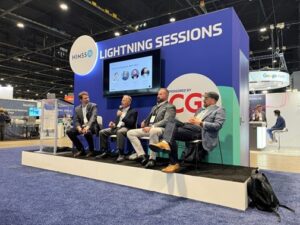
Peter: Providing a technology that connects health data. Health information is going to increase year after year. So how do we make sense of all the data and connect it together? When you need care, how do you make sure that you have all the information in one place? And truly, we believe Smile’s platform, the far open standard, can make it happen.
Health data providers host a lot of information, but do they have the technological backbone to make sure that the right information is presented to clinicians at the right time? There are few technologies out there that can enable these types of things. If you think about the other technology friendly industries out there like Uber ridesharing and financial institutions, having a lot of information is a very normal thing. But health care data exchange is very behind. We are extremely excited to bring this technology to enable the philosophy of health data fabric and even surpass other industries in this standpoint.
Thank you for providing that contextual comparison, Peter! You mentioned Uber and how it is so easy for apps to transfer data.
Peter: Shane and I talk a lot about open standards, and it is something that should not be taken lightly. Building technology to an open standard creates innovation, just like programming. For example, after Java created a programming language, everybody started programming. The reason so many apps are built is because there is a common language. And FHIR is an open standard language. It is like English. No vendor can say, “Hey, English is mine.” Open standards mean open! Everyone should be able to access it, and everyone should be able to use it.
Shane: Better Global health requires better open standards. It does. People should choose open standards whether it is SMILE or another solution. And when we do, we will begin to see important advancements that will work to heal health care.
Connect with Smile Digital Health! Join thousands of other health care professionals in keeping up to date on the latest advances in interoperability, FHIR and industry events. Sign up for the Smile Digital Health newsletter to get monthly updates.
